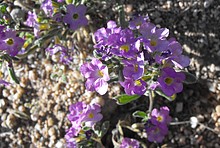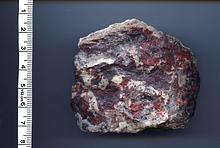Home PageAbout MindatThe Mindat ManualHistory of MindatCopyright StatusWho We AreContact UsAdvertise on Mindat
Donate to MindatCorporate SponsorshipSponsor a PageSponsored PagesMindat AdvertisersAdvertise on Mindat
Learning CenterWhat is a mineral?The most common minerals on earthInformation for EducatorsMindat ArticlesThe ElementsThe Rock H. Currier Digital LibraryGeologic Time
Minerals by PropertiesMinerals by ChemistryAdvanced Locality SearchRandom MineralRandom LocalitySearch by minIDLocalities Near MeSearch ArticlesSearch GlossaryMore Search Options
The Mindat ManualAdd a New PhotoRate PhotosLocality Edit ReportCoordinate Completion ReportAdd Glossary Item
Mining CompaniesStatisticsUsersMineral MuseumsClubs & OrganizationsMineral Shows & EventsThe Mindat DirectoryDevice SettingsThe Mineral Quiz
Photo SearchPhoto GalleriesSearch by ColorNew Photos TodayNew Photos YesterdayMembers' Photo GalleriesPast Photo of the Day GalleryPhotography
╳Discussions
💬 Home🔎 Search📅 LatestGroups
EducationOpen discussion area.Fakes & FraudsOpen discussion area.Field CollectingOpen discussion area.FossilsOpen discussion area.Gems and GemologyOpen discussion area.GeneralOpen discussion area.How to ContributeOpen discussion area.Identity HelpOpen discussion area.Improving Mindat.orgOpen discussion area.LocalitiesOpen discussion area.Lost and Stolen SpecimensOpen discussion area.MarketplaceOpen discussion area.MeteoritesOpen discussion area.Mindat ProductsOpen discussion area.Mineral ExchangesOpen discussion area.Mineral PhotographyOpen discussion area.Mineral ShowsOpen discussion area.Mineralogical ClassificationOpen discussion area.Mineralogy CourseOpen discussion area.MineralsOpen discussion area.Minerals and MuseumsOpen discussion area.PhotosOpen discussion area.Techniques for CollectorsOpen discussion area.The Rock H. Currier Digital LibraryOpen discussion area.UV MineralsOpen discussion area.Recent Images in Discussions
Identity HelpSideronatrite ?
9th Dec 2011 01:55 UTCReiner Mielke Expert

9th Dec 2011 07:57 UTCGunnar Färber
sorry but with out a quantification of this spectrum, there is no chance to classify a mineral or even a Sulfate. But Sideronatrite is well known from this location and the mineral looks like the specimen on the picture. The minerals from the Chilean locations are analysis very well by EDS and XRD.
Best wishes
Gunnar

9th Dec 2011 11:08 UTCAlfredo Petrov Manager
On a related note, one of my pet peeves is mineral descriptions which include the terms "soluble" and "insoluble". If this is mentioned in a mineral description at all, it should be quantified - How many grams in a litre of water, and at what temperature? Solubility varies so much with temperature, and even with what other minerals and gases are associated in the mix, and particle size is of course enormously important to speed of dissolution. So... classifying minerals as either "soluble" or "insoluble" is like telling the weatherman he is only allowed to describe the temperature using the words "hot" and "cold" :-)
9th Dec 2011 11:44 UTCReiner Mielke Expert
9th Dec 2011 15:41 UTCUwe Kolitsch Manager
From my personal experience, copiapite-group minerals often accompany sideronatrite/metasideronatrite, but you can also have natrojarosite (possibly K-/Al-bearing) as an accompanying phase.
9th Dec 2011 16:38 UTCReiner Mielke Expert
10th Dec 2011 18:59 UTCUwe Kolitsch Manager
10th Dec 2011 22:32 UTCReiner Mielke Expert
10th Dec 2011 23:04 UTCJolyon Ralph Founder
It's an intellectually dishonest way of labelling your specimens.
You've been given expert advice that the information you have is insufficient to accurately identify your specimens, yet you choose to ignore this and label your specimen with your chosen name regardless.
It is things like this that pollute our mineralogical knowledge with half-truths and assumptions. Once your specimen is passed onto someone else, who doesn't know the history of your identification, who will know to question it?
The honest way to label it would be to say "Sideronatrite with ?". You could probably justify saying "Sideronatrite with Metavoltine?", but I would go no further than that.
Anyway, for me it's an awful lot of bother for something which is just a fancy kind of rust :)
Jolyon
10th Dec 2011 23:20 UTCRalph S Bottrill 🌟 Manager

10th Dec 2011 23:43 UTCMaurizio Dini Expert
I must say that Jolyon is right in his statement, but I would like also to give my contribution, by the time that I consider myself a reliable amateur and experienced rockhunter of chilean stuff.
Years ago, Dr. Jochen Schluter, has analysd some of So from La Compañia mine, and actually the identified mineral were (all by XRD, some with EDS-SEM)
1) Metasiderontatrite (similar to those arge thick xls embedded in matrix)
2) Metavoltine (flat somewhat prismatic flat shape xls, with 2 main colours: brown and also strong vivid yellow-sulphur like
3) Metalunogen (lemon yellow spots and pustules)
4) Copiapite (light brown to honey brown)
5) Bonattite (azure to sky blue)
6) Rhomboclase (colorless to white)
7) Szomolnokite (yellowish flakes)
8) Butlerite (orange xls)
9) Alumocopiapite (colorless micaceous smooth green colour)
10) Aubertite (light green to somewhat acquamarine like colour)
11) Halotrichite (silky white radial xls)
Then, your sample may be among those....
If is usefull, find attached 2 pics showing typical metavoltine xls from La compañia, hexagonal habit, flat xls of a unconfusionable brown colour
a 3rd pic showing fine grained light brown Copiapite xls masses, and out fo focus, caramel fark brown Jarosite aggregates.
regards
maurizio dini
11th Dec 2011 00:19 UTCReiner Mielke Expert
11th Dec 2011 00:55 UTCReiner Mielke Expert
Here is the rub, some people on Mindat would say that because I am calling it tellurobismuthite based on inconclusive EDS I am being dishonest, but if I had done nothing and called it galena & altaite, as it was on the labeled it came with, then presumably I would be honest? Calling it tellurobismuthite may or may not be correct but it certainly more correct than galena & altaite. It would seem that not only is ignorance bliss but to some on Mindat it is also honest.
11th Dec 2011 01:40 UTCJolyon Ralph Founder
This is, without question, an admirable quality.
> There is absolutely nothing dishonest about making an informed decision on what you have.
Yes. That's absolutely correct. But then, you came here and asked for advice, and were told quite clearly that the information you had was insufficient to jump to the conclusion that you have. Rather than take that advice, and accept that you may never be able to accurately identify the material on your specimen, you have chosen to ignore it and label it with a name that you think matches.
You are free of course to make whatever decisions about mineral naming that you want to. But if you're just going to ignore advice and go with your gut instinct on what a mineral is, then perhaps you shouldn't be asking us about them.
Jolyon
11th Dec 2011 02:18 UTCReiner Mielke Expert
There is useful advice and useless advice, but my mistake was telling you what I think, from now on I will keep that to myself.
11th Dec 2011 23:40 UTCReiner Mielke Expert
"and it wouldn't be surprising if some Al substituted for part of the Fe3+. So I'd go along with the sideronatrite ID."
From the Handbook of Mineralogy:
Chemistry:
(1) (2)
SO3
42.98 43.87
Fe2O3
22.40 21.88
Na2O
17.00 16.98
H2O
17.75 17.27
Total 100.13 100.00
(1) Sierra Gorda , Chile; corresponds to Na1.96Fe1.00(SO4)1.92(OH)1.12• 2.96H2O.
(2) Na2Fe(SO4)2(OH)• 3H2O.
Also in Palache et al. 1951, pg 605, of 5 analysis given not a trace of aluminum so why would you expect there to be some? Do you know of any sample of sideronatrite with aluminum in it?

12th Dec 2011 12:26 UTCAlfredo Petrov Manager
The presence or absence of Al is not definitive for classifying a crystal as sideronatrite, whether or not none has ever been found in it before. Your specimen might turn out not to be sideronatrite. I can't tell that from a photo plus a semi-quantitative analysis. My point was that you cannot say it's not sideronatrite just because it contains aluminium.
Among the many references you could read about Al-Fe3+, I'll give just one here: Demartin F, Castellano C, Gramaccioli C M, Campostrini I (2010) Aluminum-for-iron substitution, hydrogen bonding, and a novel structure-type in coquimbite-like minerals, The Canadian Mineralogist, 48, 323-333.
12th Dec 2011 13:23 UTCReiner Mielke Expert
If sideronatrite with aluminum does not exist then I would say the presence of aluminum is pretty good proof that it is not sideronatrite. Maybe we are looking at a new mineral?
I did find an analysis of sideronatrite from Nova Scotia that contained 1100ppm Al ( and 1200ppm Ca) but such a small amount would never show up in an EDS scan. Someone must have analyzed sideronatrite from there and can tell use if it contains significant Al.
12th Dec 2011 13:39 UTCMarco E. Ciriotti Manager
I just found (small) amounts of Al studying an "unusual" metasideronatrite. So, surely, Al can substitute Fe3+ also in sideronatrite.

12th Dec 2011 14:16 UTCAlfredo Petrov Manager
12th Dec 2011 22:28 UTCReiner Mielke Expert
I said " If sideronatrite with aluminum does not exist. It still needs to be proven and until that happens you are absolutely correct. The size of the EDS peak suggests a significant amount of Al. Either way it will have to have XRD done on it to settle the issue. I am just saying that at this point there is not much evidence to support a diagnosis of sideronatrite. It looks like sideronatrite is pretty weak evidence, a lot weaker than EDS. I really have no vested interest in the outcome, I would have been much happier if the EDS showed no Al and I could safely say it is Sideronatrite. This is to me just an annoying loose end.
23rd Jan 2012 20:14 UTCReiner Mielke Expert
Now I will for sure have to XRD the sample.
24th Jan 2012 13:09 UTCRalph S Bottrill 🌟 Manager
24th Jan 2012 18:29 UTCUwe Kolitsch Manager
31st Mar 2012 00:42 UTCReiner Mielke Expert
I had the sample XRDed first by Attard Minerals and then followed up with more detailed work by Dr. Ron Petersen at Queens University. As it turns out the unknown is metasideronatrite, the brown mineral metavoltine and the white matrix tamarugite. It is likely that the high aluminum was due to contamination by tamarugite.
2nd Apr 2012 21:03 UTCUwe Kolitsch Manager

10th Apr 2012 19:27 UTCAlfredo Petrov Manager




Mindat.org is an outreach project of the Hudson Institute of Mineralogy, a 501(c)(3) not-for-profit organization.
Copyright © mindat.org and the Hudson Institute of Mineralogy 1993-2024, except where stated. Most political location boundaries are © OpenStreetMap contributors. Mindat.org relies on the contributions of thousands of members and supporters. Founded in 2000 by Jolyon Ralph.
Privacy Policy - Terms & Conditions - Contact Us / DMCA issues - Report a bug/vulnerability Current server date and time: April 18, 2024 18:17:40
Copyright © mindat.org and the Hudson Institute of Mineralogy 1993-2024, except where stated. Most political location boundaries are © OpenStreetMap contributors. Mindat.org relies on the contributions of thousands of members and supporters. Founded in 2000 by Jolyon Ralph.
Privacy Policy - Terms & Conditions - Contact Us / DMCA issues - Report a bug/vulnerability Current server date and time: April 18, 2024 18:17:40















